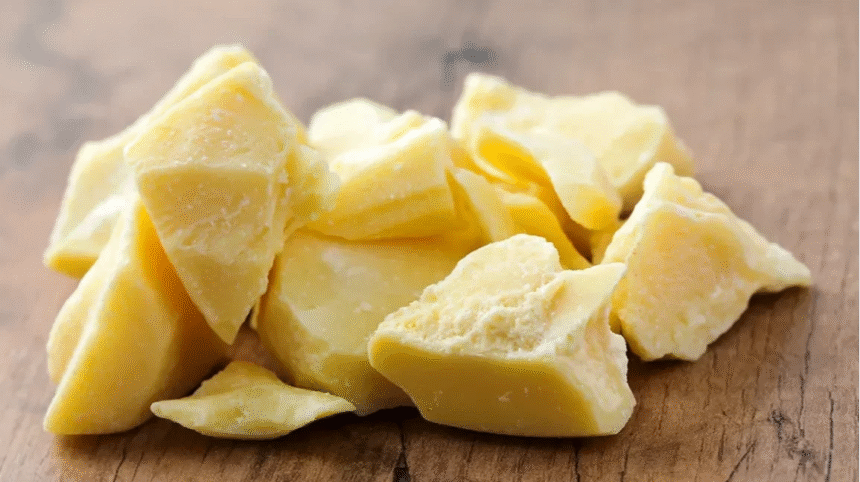Raw butter has gained rapid popularity in recent years among health-conscious individuals, traditional food enthusiasts, and those who prefer farm-fresh, minimally processed dairy products. Whether you want to enjoy its rich flavor, nutritional profile, or use it in homemade recipes, sourcing high-quality raw butter can sometimes feel challenging. Unlike conventional butter widely available at supermarkets, raw butter is usually sold through small farms, local cooperatives, or specialized online stores due to its unique characteristics and regulations in different regions.
In this article, we will discuss where to buy raw butter both locally and online, its benefits, trusted sources, and even guide you through how to make raw milk butter at home if you’d like a hands-on approach.
What is Raw Butter?
Raw butter is butter made from unpasteurized (raw) cream. Unlike standard butter, which is typically made from pasteurized milk, raw butter retains all of the natural enzymes, beneficial bacteria, and nutrients from the original raw milk. This means it contains:
-
Naturally occurring probiotics that can support gut health.
-
Higher amounts of fat-soluble vitamins like A, D, and K2.
-
A richer, creamier flavor compared to store-bought butter.
Because raw butter is not pasteurized, it must be sourced from reputable farmers or suppliers who follow strict hygiene and dairy-handling practices.
Why Choose Raw Butter?
Many people actively seek out raw butter over regular butter because of its culinary and health benefits:
-
Nutrient retention: Pasteurization can reduce certain heat-sensitive vitamins. Raw butter preserves more of them.
-
Digestibility: Some claim raw dairy is easier to digest because of the active enzymes present.
-
Superior flavor: Grass-fed and raw butter often has a more complex taste, elevating everything from rustic bread to home-baked pastries.
-
Traditional practices: Making or consuming raw butter ties us to ancestral food traditions where fresh, raw cream was a dietary staple.
Where to Buy Raw Butter Locally
If you are wondering where to buy raw butter, the best option often starts with your local community.
-
Local Farms and Dairies: Many small-scale farmers sell raw butter directly to consumers, especially in states and countries where raw dairy sales are legal. Farmers’ markets are excellent spots to meet producers personally.
-
Food Co-ops: Community-driven food cooperatives often focus on natural and traditionally made products, and raw butter may be featured in their dairy sections.
-
CSA Programs (Community Supported Agriculture): Signing up with a CSA provides access to farm-fresh products, including raw butter, raw milk, and cream-based items.
-
Health Food Stores: Certain specialty organic grocers carry raw butter, provided local laws allow its sale.
Tip: Always ask about the source of the cream, the animals’ diet (grass-fed is ideal), and whether the farm follows sanitary milking practices. These details greatly influence the quality of raw butter.
Where to Buy Raw Butter Online
For those without local access to raw dairy products, ordering raw butter online has become much easier. However, you should ensure the company complies with handling and shipping regulations in your region.
Some trusted online retailers include:
-
Amish Farm Stands Online: Known for traditional raw dairy products shipped directly to your doorstep.
-
Raw Milk Co-ops with Delivery: Co-ops often ship raw butter via cold packaging to maintain freshness.
-
Specialized Organic Grocery Platforms: Websites that prioritize organic, farm-based products usually have raw butter available.
-
Direct from Small Farms: Many small farms have dedicated websites where you can place orders online.
Make sure to double-check: shipping policies, refrigeration methods during transport, and state-specific regulations since raw butter shipping is not allowed to all states or countries.
For credible information and dairy safety guidelines, you can also refer to high-authority resources like The Weston A. Price Foundation which educates on traditional foods including raw dairy.
How to Make Butter from Raw Milk at Home
If local or online sourcing is difficult—or you just want to experience the process—you can learn how to make butter from raw milk right in your kitchen. Making your own butter only requires patience, raw cream, and a simple churning method.
Here’s a simplified guide to help you:
-
Collect the Cream: After obtaining raw milk, let it sit in the refrigerator for 12–24 hours. The cream will naturally rise to the top. Skim off the thick cream layer.
-
Churn the Cream: You can use a stand mixer, food processor, or even a traditional butter churn. Whip the cream until it separates into butter solids and liquid buttermilk.
-
Drain the Buttermilk: Collect the buttermilk (which you can use separately in baking or cooking).
-
Wash the Butter: Rinse the butter under ice-cold water until the water runs clear. This step removes leftover buttermilk, helping the butter last longer.
-
Knead and Salt (Optional): Knead the butter lightly and add salt if desired for flavor and preservation.
That’s it! You now have fresh, homemade raw butter ready to enjoy.
By learning how to make raw milk butter, you ensure freshness and can control the source of your milk and cream. It’s also deeply satisfying to connect with food in such a traditional way.
Best Practices When Buying Raw Butter
Safety and quality are key concerns with raw dairy. Keep these points in mind whether you buy or make it:
-
Only buy from trusted farmers who test their cows and maintain sanitary milking conditions.
-
Always store raw butter in the refrigerator. It typically lasts 7–10 days, though freezing extends its shelf life.
-
Legal regulations differ—research your area’s food laws before purchasing online or locally.
-
If making raw butter at home, ensure your jars, utensils, and hands are thoroughly clean to avoid contamination.
Popular Uses of Raw Butter
Raw butter is not just for slathering on bread—it can enhance many dishes:
-
Cooking: Use it for sautéing vegetables, cooking eggs, or frying lightly for added depth of flavor.
-
Baking: Raw butter adds richness to cakes, cookies, and breads.
-
Spreads & Sauces: Try it in herb butter spreads or creamy sauces.
-
Nutrition Boost: Blend raw butter into morning coffee or smoothies for added energy and healthy fats.
Frequently Asked Questions
1. How do you make butter from raw milk?
You let raw milk sit until cream rises, skim the cream, churn it until it separates into butter and buttermilk, rinse, knead, and optionally salt the butter.
2. Is raw butter safe to eat?
Yes, when sourced responsibly from clean farms that test their cows and maintain good hygiene standards.
3. Where can I find raw butter if it’s not at my local store?
You can explore community-supported agriculture programs, farmers’ markets, and online traditional food suppliers who ship directly.
4. How does raw butter taste compared to regular butter?
Raw butter is creamier, richer, and often more flavorful, especially if it comes from grass-fed cows.
Final Thoughts
Buying raw butter is a rewarding choice for those who value tradition, flavor, and nutrition. Whether you’re sourcing it locally from farmers, ordering online through specialized platforms, or exploring how to make butter with raw milk at home, there are multiple ways to enjoy this wholesome food.
By following trusted sources and handling practices, raw butter can become a regular part of your kitchen. With a revival of interest in ancestral eating, more people are discovering the joy of natural dairy products that have been cherished for centuries.
If you’re still unsure where to buy raw butter, start by exploring local farms and co-ops, then expand to reputable online platforms. Or, take the leap into homemade butter-making for an unforgettable, fresh-tasting experience.









